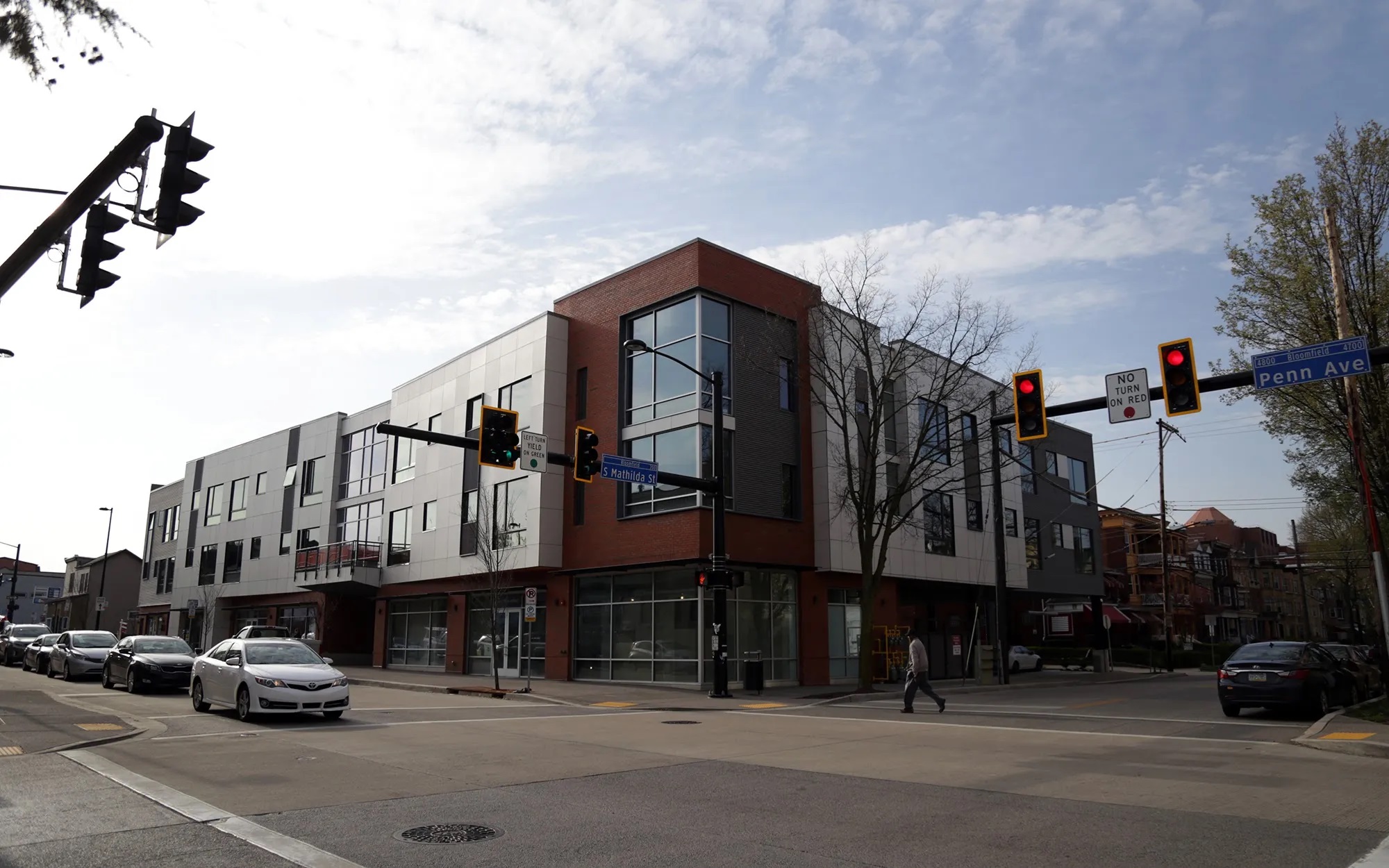ACTION-Housing’s Penn Mathilda Apartments in Bloomfield are among the neighborhood’s affordable options. Inclusionary zoning aims to create more. (Photo by Ryan Loew/PublicSource)
Pittsburgh’s City Planning Commission could vote on Dec. 10 on sweeping changes to zoning rules, after public input prompted some revisions to an earlier proposal.
“PublicSource is an independent nonprofit newsroom serving the Pittsburgh region. Sign up for our free newsletters.”
Pittsburgh’s administration continues to change proposals to overhaul the city’s zoning codes as government bodies and members of the public comment on the plans to encourage construction of affordable housing.
Mayor Ed Gainey announced on Sept. 5 measures including expanded inclusionary zoning, aimed at addressing increasing rents and meeting affordable housing needs outlined in a 2022 housing needs study. A City Planning Commission briefing on Sept. 17 kicked off the process and on Tuesday the panel held a second briefing in which city administrators presented updated plans. Many of those updates were made in response to public input. The commission is likely to vote on the measures Dec. 10 before they go to City Council.
Gainey’s administration is looking to encourage the creation of more accessory dwelling units [ADUs], plus remove some parking requirements and minimum lot sizes for new construction. Paul Cancilla, principal planner at the Department of City Planning, told the commission how some of the details around these proposals have changed after receiving public input.
He said that most of the feedback the department received through the city’s Engage PGH web portal and community meetings was favorable to the idea of adding additional residential space on existing residential property. ADUs can be garages turned into apartments or a residential unit added on top of a garage. Other examples include converting an attic or a basement into an apartment unit.
Cancilla said recent revisions would limit addition of units on top of garages to a total maximum height of 30 feet — down from 35 feet in the administration’s original proposal. They also added a limitation of two ADUs per lot for residential uses.
Defending inclusionary zoning
Administration plans to spread inclusionary zoning across the city also underwent some tweaks after public feedback. Inclusionary zoning requires that new housing developments above certain unit numbers include affordable units.
Cancilla said the planning department heard from people concerned that inclusionary zoning would stifle housing development and therefore have the unintended effect of increasing rent by limiting the creation of new units. To that point, Cancilla provided a list of new housing developments that have been built or are being built in neighborhoods currently under inclusionary zoning.
In Lawrenceville, Cancilla pointed to the creation of Arsenal 201’s second phase, which brought online 343 units, with 35 of those as affordable housing. He pointed out other construction projects throughout that neighborhood and in Oakland that are adding affordable housing stock to the market.
Parking for bikes required — optional for cars
The administration’s proposal would remove the requirement of parking creation when building new housing, leaving that to market demands. Recent changes to proposed parking development rules now aim to require bicycle spaces at all multi-unit residential developments. A previous version of the reforms limited bicycle parking requirements to projects building 12 or more units. Cancilla said the department also added regulations for parking carousels after finding that these features are trending.
Aiming to stimulate construction in smaller lots, the city is also proposing reducing the minimum lot size requirements for residential construction.
Cancilla said that the administration will continue to hold public meetings as these amendments make their way through the approval process.
“These are really a first step, a very big step, to amend our zoning code to allow for more housing to be built,” Cancilla said. “Doing so would provide opportunities for residents of all incomes to be able to live in the City of Pittsburgh, also looking to increase and diversify the housing supply to just allow more people to find housing that fits them and their budgets.”
Eric Jankiewicz is PublicSource’s economic development reporter, and can be reached at ericj@publicsource.org or on Twitter @ericjankiewicz
This article first appeared on PublicSource and is republished here under a Creative Commons license.

